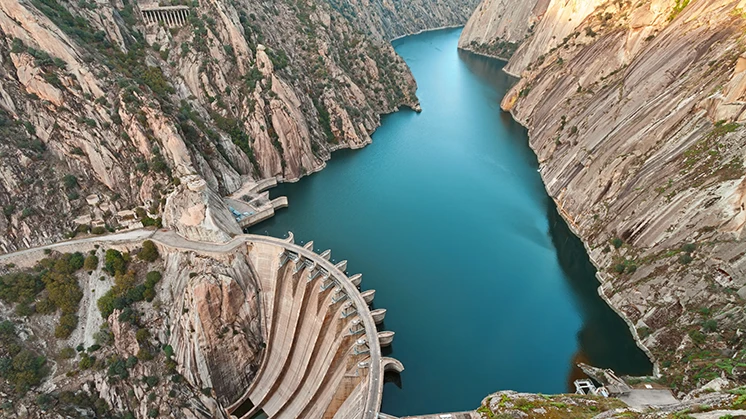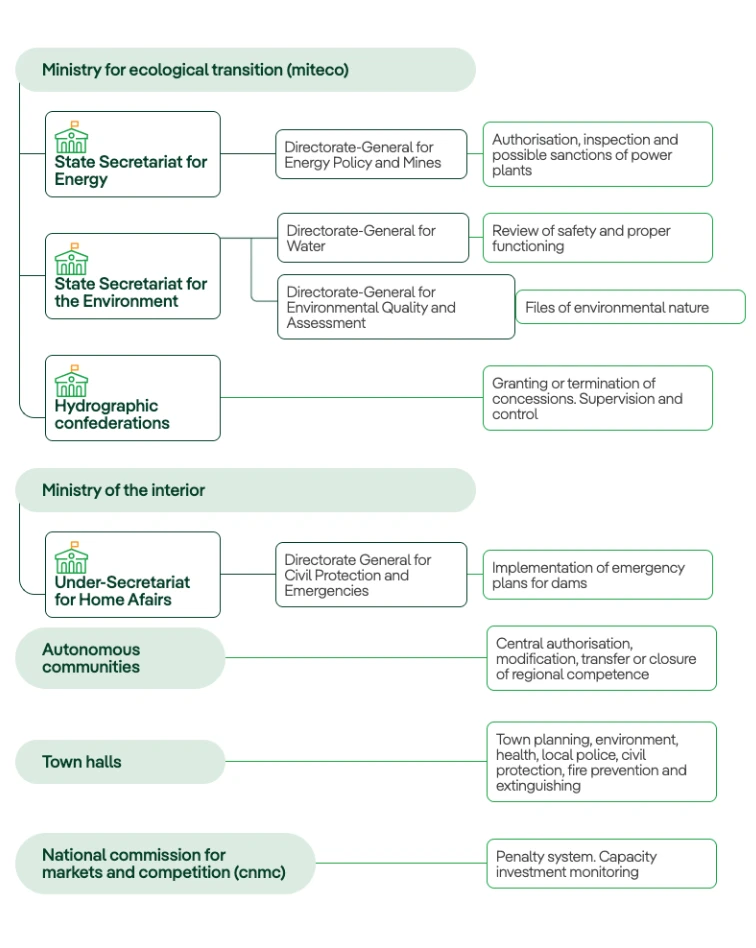IBERDROLA AND THE RESERVOIRS IN SPAIN
How reservoirs promote sustainable water use and help mitigate the effects of drought in Spain


Hydroelectric power plants have existed in Spain for more than a century, with an installed capacity in excess of 17,000 MW at the beginning of 2023 (according to data from Red Eléctrica). At Iberdrola España, we have been committed to hydroelectric power since our origins as the key to a greener future. However, the low rainfall and high temperatures recorded in the Iberian Peninsula since 2022, with particular severity in the Guadalquivir, South and Eastern Pyrenees basins, have created a challenging context in certain sectors that has led to a lot of misinformation about electricity companies and reservoirs in Spain.
The meteorological reality is worrying. More than 25% of the Spanish territory is in an alert or emergency scenario due to water scarcity at the end of the first quarter of 2023 (according to the Ministry of Ecological Transition). The good health of the reservoirs in Spain is a guarantee for the future as they favour the sustainable use of water and help to mitigate the effects of the drought in Spain.
Our purpose, as a company that forms part of the Iberdrola Group, is clear: to drive the energy transition to combat the effects of climate change, building a more electric, healthy and accessible energy model based on renewables.
Drought is not just a concern in Spain. It is a global challenge
A quarter of the territory of the European Union is affected by drought, according to the European Commission's Joint Research Centre, and data confirm that globally the frequency of flash droughts has increased over 74% of the planet's surface, making it a common challenge that transcends national borders.
Meteorological drought is a natural phenomenon that occurs as a result of low rainfall and high temperatures, which hydroelectric power plants do not influence at all and from which they do not derive any benefit. In fact, the electricity sector is particularly vulnerable to increasing water stress, as hydropower production can decrease significantly where water flows are likely to decrease. The decline in supply of this renewable energy, in turn, can create a gap in the market for other more expensive and polluting energy sources.
Within Spain, the lack of rainfall since December 2022, with an extremely dry month of April in practically the entire territory according to AEMET, has aggravated the situation of water scarcity. The worst situation continues to be in the Guadalquivir and Guadiana basins, as well as in some areas of the Ebro. The situation is also worrying in the internal basins of Catalonia and Andalusia. Fortunately, the Miño-Sil, Galicia-Coast, Eastern Cantabrian, Western Cantabrian, Júcar, Ceuta and Melilla basins remain outside the alert scenario.
The movement of dammed water: regulated and transparent
There is significant state control over where, how and how much water is released from Spanish dams (which is called turbining the water, in terms of electricity generation). As a result, energy companies operate with a narrow margin, subject to very strict regional and state regulations. There is a requirement that there must always be a significant reserve of water that is not turbined, while guaranteeing an adequate volume of flow downstream (the "ecological flow" set by the Hydrographic Confederations that protects fish life and riparian vegetation).
The Water Law sets the priorities for water use and the Administration sets the maximum and minimum levels at which each reservoir moves. But there are many more public bodies involved in one way or another in the regulation and control of hydropower generation in Spain.
Public bodies responsible for dams and reservoirs in Spain
These are the main public bodies - state, regional and municipal - with different competences in order to control that the creation, modification and management of reservoirs and dams comply with environmental, safety, sustainability and competence requirements at all times.

The purpose of dams is precisely to make a regulated use of an irregular resource such as water - dammed and released water - so that the functions established by law can continue to be fulfilled downstream. In order: water for drinking, for irrigation, for industrial uses and, where possible, for recreational uses. This is without prejudice to the fact that there are reservoirs with these uses that were built specifically for hydroelectric production. If there is water and turbines are available, it is mandatory by law to offer the energy to the market.
It is also important to be aware in this context of the obligation to comply with the Albufeira Agreement, which governs coordination in the management of the rivers shared by Spain and Portugal (Minho, Douro, Tagus and Guadiana) and requires the delivery of certain volumes of water. In Iberdrola's case, this regulation particularly affects the reservoirs it operates in the Tagus basin, such as the Alcántara reservoir and the Cedillo reservoir (both in Cáceres), and in the Duero basin, such as the Aldeadávila power station (Salamanca) and the Ricobayo reservoir (Zamora).
Sustainable water management in reservoirs in Spain
A basic principle of hydropower generation is that water is neither wasted nor lost in the process, only its energy potential is used to transform it into electricity. Therefore, reservoirs in Spain can never "waste" water, they only regulate its flow, in a transparent and strictly regulated manner.
Moreover, hydroelectric regulating reservoirs make a very important contribution to regulating (storing) water and are therefore important elements that help to combat the effects of droughts. At the same time, they prevent overflows. All this with an exhaustive control of the flow that allows the river ecosystem to be protected, both in periods of drought and in periods of extreme rainfall. Furthermore, in order to be able to continue providing its energy service in the event of droughts, there is hydraulic pumping technology, which, with a closed water cycle, can make the plant independent of rainfall.
Capacity figures in Spain in context
In order to give a real value to the data we read about water movements or transfers, it is important to know that Spain had, for example, at the beginning of 2023, a water reserve of almost 26,000hm3 of water in reservoirs, just over 46% of the total capacity of 56,069hm3 (according to data from Embalses.net, a website specialising in compiling and displaying data on the status of Spain's reservoirs in real time). In the Atlantic basins, where we have our main hydroelectric power plants, the level of reserves was above the average level of the last 20 years, thanks to the rainfall collected at the end of 2022 and the beginning of 2023.
Based on these figures, the reservoirs where Iberdrola operates, for example, were in better condition at the beginning of 2023 than the national average and considerably better than the previous year. Specifically in Extremadura, the region with the largest reservoir water capacity, our reservoirs were at more than 70% of their total capacity, which is more than 20% higher than in 2022 and 45% higher than the national average. In this way, human consumption of water is guaranteed, with Cáceres having sufficient water reserves to supply for the next 90 years.
Droughts also affect hydropower production
Another important issue is that many electricity companies, including Iberdrola España, have part of their electricity production pre-negotiated with long-term contracts. If hydropower production decreases sharply and unexpectedly, this is detrimental to the business as they have to supply, if necessary, the missing energy from other sources.
Hydroelectric power in Spain: cheap and clean
Hydroelectric energy, in addition to being renewable, clean and emission-free, is key to covering electricity demand and avoids the use of more expensive and polluting technologies. In the Spanish energy system, the price per kWh for each hourly slot of each day is set the day before, determined by the Iberian Energy Market Operator based on the balance point between the sales offer of the generators and the purchase offer of the marketers and large consumers. Therefore, the more renewable energy that is offered, including hydro, with a variable cost that is much lower than that of fossil fuels, the more the final price will be reduced.
















